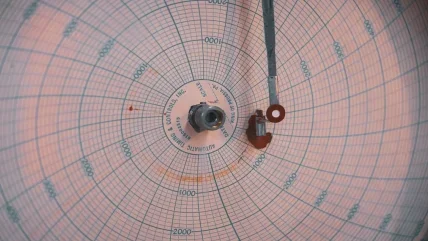
The Japan Torus-60 Super Advanced (JT-60SA) fusion device, the world’s largest operational superconducting tokamak, has been launched at Japan’s National Institutes for Quantum Science & Technology (QST) in Naka in a joint ceremony by Japan and the European Union (EU). The ceremony was attended by European Commissioner for Energy Kadri Simson; Japan’s Minister for Education, Culture, Sports, Science & Technology, Masahito Moriyama; and Japan’s Minister of State for Science & Technology Policy, Sanae Takaichias well as other senior politicians and industry representatives. They were able to witness a plasma operation from the control room.
Work on JT-60SA began in 2007 based on the EU-Japan Broader Approach Agreement – a scientific collaboration intended to promote know-how in fusion through a series of projects. Construction was completed in 2020 with first plasma in October this year.
Fusion for Energy (F4E) managed the EU’s contribution to the project including fabrication of components by Belgium, France, Germany, Spain and Italy. “What happens here today will matter tomorrow for the contribution of fusion in a carbon-free energy mix, said F4E Director Marc Lachaise. “JT-60SA is key to the international fusion roadmap because it provides a one-of-a-kind possibility to learn, operate this unique fusion device and to share that valuable knowledge with ITER. Also, it allows European research laboratories and industry, jointly with Japan, to work hand-in-hand developing a meaningful partnership.”
JT-60SA was developed using much of the existing site infrastructure from the Japan Torus-60 upgrade experiment (JT-60U), which cut project assembly time and costs, although most of the main components were re-designed and manufactured. The 2600-tonne facility is similar in design to the International Thermonuclear Experimental Reactor (ITER) under construction in France, but much smaller at about 13.7 metres across and 15.4 metres high. Work undertaken by JT-60SA will support ITER.
A number of European organisations, known as voluntary contributors, provided resources, components and services and will continue to do so. These include: EUROfusion, a European consortium consisting of 31 laboratories in the field of fusion; Germany’s Studiecentrum voor Kernenergie and Karlsruhe Institute of Technology (KIT); Belgium’s Centre d’Etude de l’énergie Nucléaire (SCK-CEN); Germany’s; Spain’s Centro de Investigaciones Energéticas, Medioambientales y Tecnológicas (CIEMAT); France’s Commissariat à l’Energie Atomique et aux Energies Alternatives (CEA); and Italy’s Consorzio RFX, CNR and Agenzia nazionale per le nuove tecnologie, l’energia e lo sviluppo economico sostenibile (ENEA). In total, 500 researchers from Europe and Japan were involved, and more than 70 suppliers contributed to the manufactureof its components.
The total cost of construction is estimated at €560m ($608m), which was shared between Europe and Japan. Some 80% of the European contribution was provided by the voluntary contributors, while the remaining 20% came from F4E, directly funded by the EU budget. During the operational phase, starting in 2020, the European contribution so far, is estimated to be around €75m directly provided by the EU budget. F4E has provided 80% of the European contribution, with 20% coming from EUROfusion for the supply of hardware.
All the results from JT-60SA will be shared with ITER. All lessons learnt from manufacturing, operation, repairs will be shared with the scientists, industry, and laboratories participating in the project. The experiment has already become a reference in the fusion community offering the new generation of experts with training opportunities, such as the first International Fusion School which was held in September 2023. Senior experts from EUROfusion and the ITER Organisation will also spend time at the JT-60SA facility The project has fostered a stronger collaboration between companies and laboratories.






